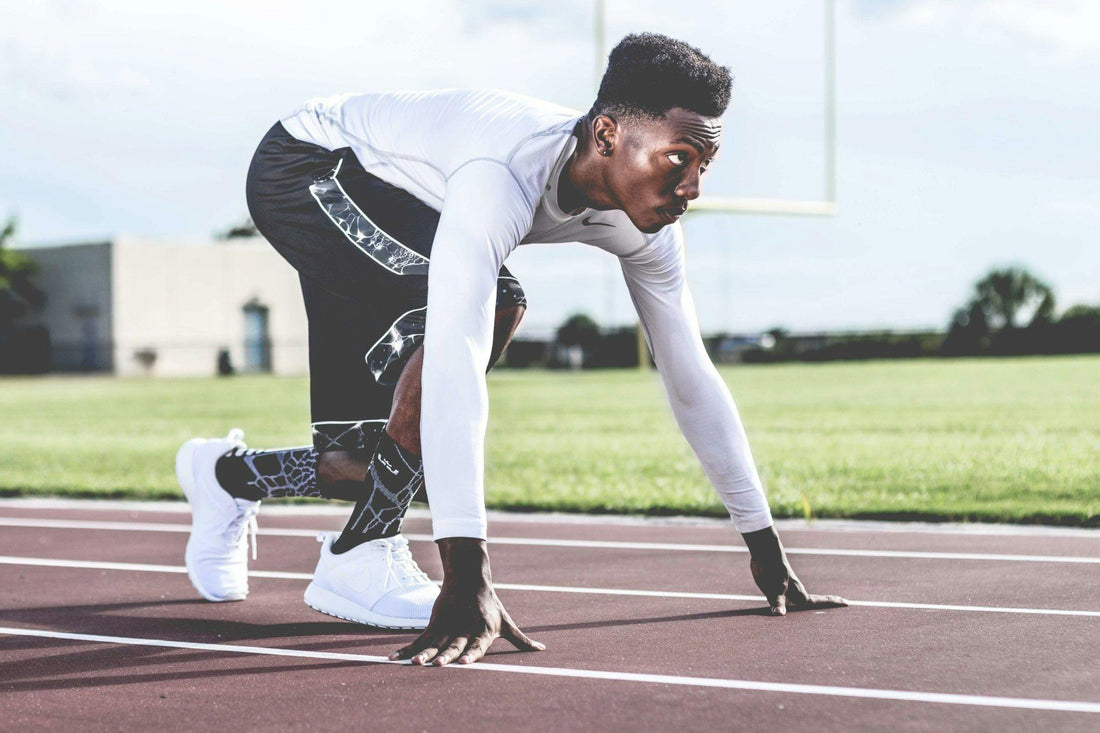
ACL Injury Prevention for Runners
ACL Injury Prevention for Runners
Staying on the road isn’t just about weekly kilometres—it’s about protecting the anterior cruciate ligament (ACL) that stabilises your knee. Runners risk strain from downhill braking, sidesteps, fatigue-driven form collapse, and old ankle/hip niggles that shift load to the knee.
The upside? Prevention is trainable and fuel-able. Combine targeted training with smart sports nutrition and hydration to keep your stride strong.
Why ACL Injuries Are a Concern for Runners
The ACL checks forward glide and rotation of the tibia. In distance running, strain builds with poor single-leg control, stiff hips, aggressive heel striking on descents, or abrupt direction changes on trails. A tear often means 6–12 months out and slow return-to-sport, with deconditioning and confidence dips that linger.
Key Training Strategies to Prevent ACL Injuries
Strength training (quads, hamstrings, glutes)
Twice-weekly lower-body strength (split squats, RDLs, hip thrusts, Nordic curls) builds co-contraction so the knee doesn’t wobble under fatigue. Strong hamstrings resist anterior tibial translation; glutes keep the knee from caving in.
Mobility and flexibility exercises
Tight hip flexors and calves push the knee into poor positions. Add hip extension, ankle dorsiflexion, and slow, controlled end-range squats and lunges.
Balance, stability, and neuromuscular drills
Single-leg balance with reaches, hop-and-stick, lateral bounds, and deceleration drills teach the knee to land “quiet” and stacked—skills proven in ACL prevention programs.
Running form and technique adjustments
Shorten over-striding, keep cadence steady, and soften downhill impacts with a slight forward lean. On trails, scan ahead so direction changes are planned.
The Role of Nutrition in Injury Prevention
Fuelling is joint insurance. Carbs keep brain and muscles firing so technique holds. Protein provides amino acids to repair tendon and muscle. Healthy fats support cell membranes and dampen low-grade inflammation.
Protein foods for recovery and joint health
Aim for 20–30 g protein within 60 minutes post-run and again across meals. Mix dairy, eggs, lean meats, tofu, legumes, and collagen-rich foods; pairing collagen or gelatine with vitamin C before strength may support connective tissue synthesis.
Magnesium and amino acids for muscle function
Magnesium supports neuromuscular firing and may reduce cramp risk in deficient athletes, while essential amino acids (especially leucine) trigger muscle protein synthesis. If intake is patchy, targeted supplementation can help.
Carb blends for sustained training energy
On long runs, multi-transportable carb blends (glucose + fructose) absorb well and feel gentler on the gut, preserving form when fatigue would otherwise sabotage mechanics.
Hydration and Salt Balance for Athletes
Hydration lubricates cartilage and supports shock absorption. Dehydration raises perceived effort and erodes decision-making—when foot placement matters most.
Does salt cure cramps?
No single cause, no single cure. Cramps stem from neuromuscular fatigue with contributions from electrolyte loss; salt helps some athletes, but it’s not guaranteed.
Natural ways to stop muscle cramps
Quick options like pickle juice may trigger neural reflexes that abort a cramp; salt tablets and products like CrampFix can be useful if you’re a salty sweater. Test in training, not race day.
Salt and sports performance: benefits vs risks
Sodium supports fluid retention and thirst, improving heat tolerance and carb absorption. Overuse can cause GI upset or elevate blood pressure in sensitive people. Personalise to sweat rate, climate, and session length.
Practical Fuelling & Prevention Tips for Runners
Pre-run: eat a carb-centred meal 2–3 h out, then a small top-up. Mid-run (if >60–75 min): 30–60 g carbs/h (up to 90 g with blends) plus electrolytes in heat. Post-run: 20–30 g protein + carbs within an hour. Hydration: start euhydrated; use electrolytes on long, hot, or sweaty sessions. Recovery day: easy mobility and protein-rich meals. Supplements: consider magnesium if intake is low, EAAs around strength, and tested carb blends for long runs.
Female ACL Injury Prevention
Female runners may show greater knee valgus under fatigue and experience cycle-related laxity. Prioritise hip abductor and hamstring strength, landing mechanics, and technique emphasis in higher-laxity phases.
FAQs – ACL Injury Prevention and General Sports Nutrition
Best exercise to prevent ACL injuries?
A program, not a single move: split squats, hip hinges, Nordics, hop-and-stick.
What foods help prevent sports injuries?
Protein, complex carbs, healthy fats, and produce; include dairy or fortified alternatives for calcium.
Does salt cure cramps?
Helps some heavy sweaters but isn’t universal; address training load and fatigue.
Best hydration strategy for athletes?
Plan to sweat rate, session length, and climate; add sodium and carbs for long or hot runs; Fixx Nutrition’s Fuel X endurance fuel range is designed specifically to meet the hydration needs for athletes, factoring in all of the critical ingredients to ensure you stay hydrated.
Preventing ACL injuries isn’t luck. Train smart; strength, mobility, and neuromuscular control—and fuel smart with sports nutrition, carb blends, protein timing, and tailored hydration and salt balance. Do the basics consistently, and you’ll stack resilient kilometres, not medical bills.
To learn more about how Fixx Nutrition supports athletes nutritional requirements and with cramp management please click here.
References
- NYU Langone Health. Five Ways to Prevent ACL Injuries.
- Johns Hopkins Medicine. ACL Tears in Female Athletes—Q&A with a Sports Medicine Expert.
- Gokeler, A., et al. (2018). Sports Medicine, 48(8), 1777–1798.
- ESSKA. ACL Prevention for All (consensus resources).
- Schwellnus, M. P., et al. (2019). BMJ Open Sport & Exercise Medicine, 5, e000448.
- U.S. Soccer: Recognize to Recover. ACL Injury Prevention.
- Griffith University. Safe Sport for Kids: Over 50% of ACL Injuries Are Preventable.